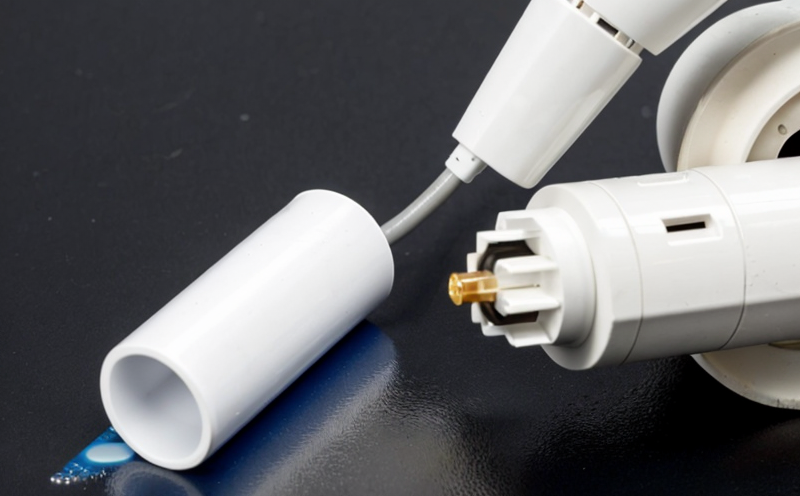Testing solvent resistance of coatings for electronics
The Critical Importance of Testing Solvent Resistance of Coatings for Electronics Ensuring Reliability and Performance
In todays fast-paced and technologically advanced world, the electronics industry is a rapidly growing sector that requires innovative solutions to meet the demands of modern technology. One critical aspect of ensuring the reliability and performance of electronic devices is testing their coatings resistance to various solvents. This laboratory service, provided by Eurolab, is a crucial step in validating the durability and longevity of electronic components.
What is Testing Solvent Resistance of Coatings for Electronics?
Testing solvent resistance of coatings for electronics involves subjecting the coated surfaces to different types and concentrations of solvents to assess their ability to withstand exposure. This process simulates real-world conditions, such as exposure to chemicals, cleaning agents, or environmental factors, which can compromise the integrity of the coating.
The testing procedure typically includes exposing the coated samples to various solvents, observing the impact on the coatings appearance, adhesion, and performance. The results are then compared to established standards to determine the solvent resistance of the coating. This information is invaluable in identifying areas for improvement and ensuring that coatings meet or exceed industry specifications.
Why is Testing Solvent Resistance of Coatings for Electronics Essential for Businesses?
In the electronics industry, reliability and performance are paramount. Any compromise on these aspects can lead to costly failures, product recalls, and damage to reputation. By testing solvent resistance, businesses can
Ensure compliance with industry standards Adherence to regulatory requirements is crucial in the electronics sector. Testing solvent resistance helps manufacturers comply with industry standards and regulations.
Reduce warranty claims and liabilities Coatings that are prone to degradation or failure can result in costly warranty claims and liabilities. By testing solvent resistance, businesses can minimize these risks.
Improve product reliability and longevity Solvent-resistant coatings ensure that electronic components remain functional over an extended period, reducing the need for replacements and minimizing downtime.
Enhance customer satisfaction Products with robust coatings that withstand exposure to various solvents are more likely to meet or exceed customer expectations.
Stay competitive in the market Businesses that invest in testing solvent resistance can differentiate themselves from competitors by offering high-quality products with superior performance.
Key Benefits of Testing Solvent Resistance of Coatings for Electronics
Improved coating durability By assessing a coatings ability to withstand exposure to various solvents, manufacturers can identify areas for improvement and develop more robust coatings.
Increased product lifespan Solvent-resistant coatings ensure that electronic components remain functional over an extended period, reducing the need for replacements and minimizing downtime.
Enhanced product performance Coatings with improved solvent resistance lead to better overall product performance, including reduced electrical conductivity and increased thermal stability.
Cost savings By testing solvent resistance, businesses can minimize warranty claims, liabilities, and product returns, resulting in significant cost savings.
Frequently Asked Questions (FAQs)
Q What types of solvents are typically used for testing?
A Various types of solvents, including cleaning agents, chemicals, and environmental factors, are used to simulate real-world conditions. These may include acetone, methanol, isopropyl alcohol, and others.
Q How long does the testing process take?
A The duration of the testing process varies depending on the specific testing method and the type of coating being evaluated. Typically, results can be obtained within 1-5 days.
Q What are the benefits of using a laboratory service like Eurolabs?
A By outsourcing solvent resistance testing to a specialized laboratory like Eurolab, businesses can ensure accurate and reliable results without investing in expensive equipment or personnel.
Q Can I test solvent resistance myself?
A While it is possible to conduct basic tests in-house, specialized laboratory services like Eurolabs offer more comprehensive and accurate results due to their advanced testing equipment and expertise.
Q Are there any specific industry standards for testing solvent resistance of coatings for electronics?
A Yes, several industry standards, including IEC 60811-2-1, ASTM B117, and ISO 9227, provide guidelines for evaluating the solvent resistance of coatings. Eurolabs laboratory services are designed to meet these standards.
Conclusion
In conclusion, testing solvent resistance of coatings for electronics is a critical aspect of ensuring the reliability and performance of electronic components. By investing in this laboratory service, businesses can
Ensure compliance with industry standards
Reduce warranty claims and liabilities
Improve product reliability and longevity
Enhance customer satisfaction
Stay competitive in the market
Eurolabs comprehensive testing services, including solvent resistance testing, provide manufacturers with the confidence that their products meet or exceed industry specifications. By partnering with Eurolab, businesses can ensure the quality and performance of their coatings, ultimately driving growth and success in the rapidly evolving electronics industry.
Contact Us
For more information about our laboratory services, including Testing Solvent Resistance of Coatings for Electronics, please visit our website to learn more about our comprehensive testing solutions.




